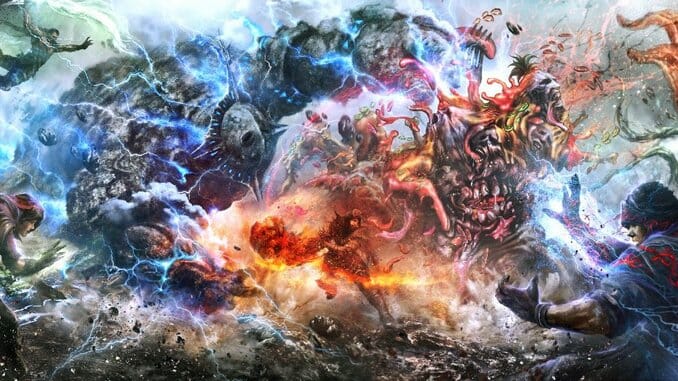Soul Sacrifice (Vita)

I have made a great many sacrifices.
Between my own memories and my victims’,
I can no longer safely distinguish.
Was it truly I that authored this journal…?
The narrator in Soul Sacrifice, a sorcerer, has some problems. His trade requires him to kill marauding monsters roaming the dark fantasy landscape of Keiji Inafune’s strange new Vita title, though these beasts were once human. Corrupted by greed (or other material sin), ordinary people wanting nothing more than some measure of escape from the misery and toil of such a world took on hideous new form—the memories and thoughts of which are stored interminably in the sorcerer’s right arm following their slaughter.
Compounding this is the death of the sorcerer’s partner, the unfortunate outcome of a kill-or-be-killed duel and a long ago necessity to complete initiation rites into Soul Sacrifice’s magical order. She, as the unnamed magician’s penned thoughts often reflect, remains an ethereal presence with him in tortured perpetuity. She will not let the sorcerer forget his act. Nor will her dormant, insatiable bloodlust cease, even as it pulses within his forearm’s veins. Of course this unquenchable thirst to do violence, in tandem with the mingling of his victims’ would-be souls, is slowly driving the sorcerer insane. This all sounds pretty interesting, right?
It’s not.
On paper, Soul Sacrifice has a lot going for it. It’s an action-RPG that appears to carry a hybrid design sensibility straddling the line between Monster Hunter’s co-op and the inherent, challenging dread of Dark Souls’ Lordran. Here you’re essentially working your way through a cursed tome, re-living past feats of the unnamed sorcerer. As it turns out, this means little more than fighting through untold numbers of five-minute battle scenarios in order to grind and gain new equipment.
It’s a vicious cycle. New spells and abilities, harking back to Ocarina of Time’s customizable control scheme and fleshed out in the style of a sloppier, lower-rent Dragon’s Dogma, can be used to change up weaponry, magic, defensive and support abilities as needed—which is often, given the frequency of different elemental variant enemies you’ll encounter.
Yet it’s all in service of more combat. What Inafune intended on delivering, a bizarre multiplayer-ish experience where sacrificing oneself (or one’s allies) was as crucial a gameplay component as it was to its thematic core, just isn’t really here.
Blood offerings are nevertheless still part of the game’s lore. A sorcerer is bound by the order’s code to take the life of those who have become monsters, even when their last shred of humanity begs for mercy before death. It is unusual (and, tragically, so close to genuinely engaging) to see a massive pumpkin-chested demon or a bloated, horrific harpy screaming about how much they miss their mother, or how a lost lover has abandoned them (excellently portrayed, even, through subtitles and unsettling voicework approximating an ancient tongue).
Narratively, it’s the price these aberrations pay for allowing themselves to fall to the lore’s incomprehensible corruption. In practical design, the outcome of this would-be moral choice is merely the difference between raising your defensive stats or gaining experience for dark magical powers. (Which nets you which is pretty obvious, I’m sure.)
It works the same way for you. Should a comrade fall in battle, you can again choose to resurrect or offer up their life, respectively letting them rejoin the fray or using gruesome death to bring about a supposedly cataclysmic spell that will devastate any and all it comes in contact with. At the same time if you’re the one who falls, you can either tell your friend to sacrifice you, kill yourself (the same thing, practically) or make an entreaty for revival.
-

-

-

-

-

-

-

-

-

-

-

-

-

-

-

-

-

-

-

-

-

-

-

-

-

-

-

-

-

-

-

-

-

-

-

-

-

-

-

-









































